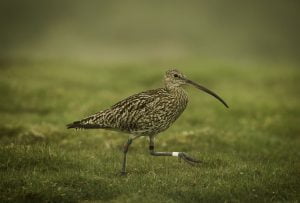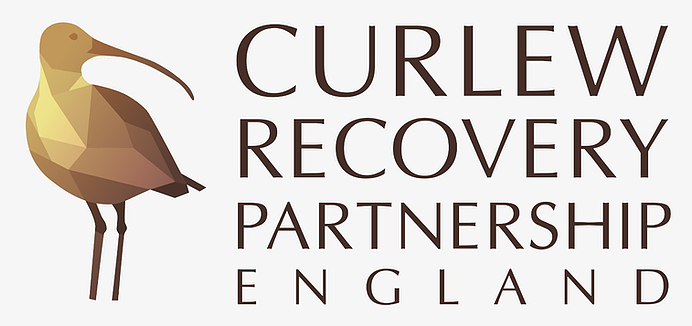Introduction
The Curlew Recovery Partnership (CRP) was officially launched on 01 Mar 2021, and following a joint press release it was encouraging to see widespread publicity in national, regional and specialist media.
The first emails started arriving in our CRP email account from mid-morning onwards on launch day, and for the remainder of the month there has been a steady stream of email and phone correspondence with people across England who are keen to help Curlews and to engage with the CRP.
Our network already has about 150 contacts, many of whom represent larger groups, so we are already connected to several hundred Curlew enthusiasts across the country! The purpose of this blog is to summarise the feedback received in our first month, as it provides a useful initial snapshot of our network and the various issues facing England’s Curlews, and also some of the ways in which individuals and groups can contribute.
Who is in our network?
In addition to the Steering Group members, our growing network comprises a wide range of organisations and individuals,
including major landowners and managers (private and public); owners of smallholdings; farmers and farmer
clusters;gamekeepers; local wader groups; volunteer groups and disability groups; education providers; undergraduate/postgraduate students; ornithologists/birders; and many individuals who are general Curlew enthusiasts.
In the coming weeks we will be producing network maps that will help illustrate how all of these contributors fit together at both a national and regional level, and to enable us to identify any obvious gaps in our network. The majority of correspondents are based in England, with a wide geographic spread, but with particular clusters in areas such as Yorkshire where Curlews are still a highly visible and audible part of the landscape.
What issues have been identified?
One of the most common issues identified was a lack of experience regarding Curlew survey and monitoring, meaning correspondents were unsure as to whether Curlews were breeding and whether they were productive (raising chicks). There were also several enquiries about the best place to send records of breeding and/or wintering Curlews.
A range of pressures affecting both breeding and wintering Curlews in England were identified. Grass cutting for silage was noted as a serious issue, particularly in lowland areas, with breeding Curlews attempting to nest in grass fields but eggs or chicks routinely falling victim to cutting for silage in the breeding season. Changing management regimes in key habitats such as in-bye land, including increased stock numbers and the resultant high grazing pressure, were also identified as having negative impacts on Curlews. Future changes to Agri-Environment Schemes (AES) were identified as both a threat and an opportunity, depending on the outcomes. Large numbers of generalist predators, such as Foxes and some species of corvid, were also identified as threats to eggs and chicks – ongoing alterations to the licensing regime for predator control were noted as having a potentially negative impact on Curlews.
The issues outlined above are mostly contributing to low productivity of breeding birds, but we also received several enquiries about planned or proposed housing and industrial developments on or close to sites holding breeding and/or wintering Curlews. Perhaps surprisingly, given their current conservation status, Curlews have little or no legal protection away from designated sites, e.g. Special Protection Areas, and there is therefore a risk that planning applications that contribute to Local Development Plans will continue to gradually chip away at important Curlew sites in the coming years.
Finally, there were concerns expressed about recreational disturbance, particularly in popular visitor hotspots such as National Parks, with dogs off leads being identified as a particular issue.

What support has been offered?
It has been very encouraging to receive so many offers of support from correspondents, all keen to help Curlews and to contribute to their conservation. These include volunteers to support Curlew survey and monitoring, offers to engage with local communities through talks and social media, and development of local conservation groups and farmer clusters focussed on helping Curlews. We have received several offers of financial support, a couple of enquiries about legacies, and even an offer of a small parcel of land that has potential to host Curlews! We’ve also received enquiries from education providers who are keen to include Curlew conservation in their curriculums.
Several correspondents mentioned their interest in Curlews had been initiated and/or increased by Curlew Moon, a book written by our Chair, Mary Colwell. There were many uplifting comments, providing pinpricks of hope and inspiration, and lots of great examples of how different sectors can engage in Curlew conservation. We reproduce a few anonymised examples below:

“We are very keen to get involved with the CRP and be part of helping this iconic bird of the British countryside. My position on the estate is farm manager, helping with lots of aspects on the estate but in particular the implementation and delivery of a new Countryside Stewardship Scheme starting in January 2022, and a new woodland creation scheme. We are looking at creating wetland habitats as part of the new scheme and protecting and enhancing the habitats present on the estate. We have lots of Curlew visit the estate, I shall be monitoring the situation to see if we have any breeding success this year.”
“I was excited to see the launch of the Curlew Recovery Partnership, working as estate manager on our farm and with regular visits from Curlew. We’re keen to do what we can, working with other landowners and organisations, to help support Curlew recovery. We’re converting the farm to organic and going into an extensive mid-tier Countryside Stewardship agreement that takes 60% of the farm out of production dedicating it to wildlife, with the cropped areas being managed more sustainably. Curlews are regular visitors to the farm, and we’re keen to understand what we can do to support them as well as other farm visitors such as Lapwing.”
“We have a stable population of Curlew here thanks to the legal predator control and habitat management, but chick survival has been recently impacted by changes to the general licences. With my wife, I’ve organised two Curlew Festivals for local schools and the local community and try to spread the word about the problems affecting Curlew on social media. We are currently looking at the new agri-environment schemes and how they can benefit ground nesting birds on the land we manage directly and on tenant farms. We’d like to know more about the partnership and how we could work together.”
“We are a small group of people aiming to help Curlew recovery, including farmers, conservationists, volunteers and passionate people. In the last years we have found nests, protected them with fences, coordinated best advice etc. With mixed success. We are interested in what we can do to help each other and would be very interested in your Curlew Fieldworker Toolkit when it becomes available.”
“We would like to get involved in this project as a college. Our students will require an in-depth knowledge of what is required to support populations of Curlew when they go out into industry and become gamekeepers, rangers or land managers.”
“I am a second-year student. Since the Curlews have arrived at my local site, I have been assisting with near daily observations and reporting back to the local Curlew group. I am emailing to request more information on this new programme and ask whether I can assist in any way.”
“Every year the curlews return to nest around us, and I am passionate about conserving them. Please put me down to volunteer for you in any way I can, and I’d love a Curlew Fieldworker Toolkit when it’s available. I’d like to do some sort of publicity for World Curlew Day – our house is right on a popular walking trail and we get a lot of walkers.”
“I live in an area where Curlews are still frequent. They nest in many areas close to where I live. I am not a landowner. I’ve suggested to the local wildlife trust about the urgent need to get into stewardship or even purchase land still in use by curlews. There are some extensive areas of semi-improved upland pasture still in this area, although I see it being slowly lost to agricultural intensification, horse keeping, draining etc. After reading Mary’s book in particular I had been pondering over the past couple of years what I could do to help. Perhaps set up a local group to at least start to locate key nesting areas, understand numbers of breeding pairs etc. But I’ve not known where to start. Is this something you could advise me on?”
“I am so delighted to learn of this conservation initiative and would like to become involved with any conservation efforts that are taking place in my area. I am stopped in my tracks by the Curlews’ call when I am out walking on the moors. Please let me know of any activities, such as ecological monitoring that require volunteers.”
“I am delighted to see the formation of this group. Our curlews returned last week, and it is lovely to hear them again; their rising song is one of the perennial joys of living here.”
What happens next?
Firstly, please be patient if we haven’t yet followed up on specific enquiries or offers – we have had a large amount of correspondence since our launch, but hopefully this summary demonstrates that we are listening to our network and will be targeting our future resources accordingly. To that end, we intend to deliver regionally focussed online meetings later in the spring to help introduce the CRP and to better understand specific issues raised by our network members in different regions of England.
One of our first activities will be to deliver a range of resources to support those who would like to record breeding Curlews and other waders, and to better understand the birds’ productivity. We are already promoting the Wader Calendar produced by the BTO, which is targeted at farmers and small landowners, and is designed to be quick and user-friendly. We are also intending to release a new Curlew Fieldworker Toolkit on World Curlew Day on 21 Apr, providing state-of-the-art info on a wide range of Curlew survey methods. World Curlew Day will provide an opportunity for us to promote Curlew conservation via online talks and social media, and we are also aiming to release a Curlew slide pack that can be used by network members amongst their local communities and groups.
Some of the key issues identified above, such as silage harvesting and predator control, are active areas of discussion amongst our Steering Group, and we are liaising with Defra and Natural England to identify opportunities to include more targeted support for Curlews and associated species and habitats in future AES. We have already provided objective advice and support to those who have enquired about planning applications that may impact Curlews and have connected people to sources of local expertise where possible. Although we do not have the capacity or technical expertise to routinely respond to enquiries about planning applications, we will be looking to provide and link to online resources that will help people ensure that Curlews are being appropriately considered in any applications.
If you are interested in financially supporting frontline conservation work on Curlews, please get in touch and we can get direct you to high priority topics and locations. And if you’re not yet part of our network, but would like to be engaged, please email us at: hello@curlewrecovery.org
Finally, thanks to everyone who has taken the time to contact us – we look forward to engaging with you all in the coming days, weeks and months!

